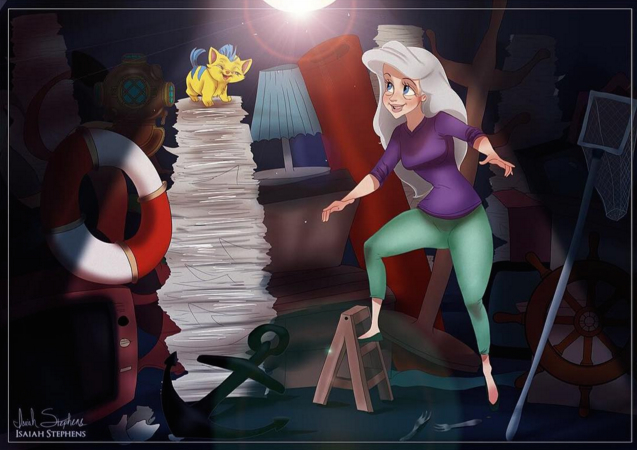A strain of high-cannabidiol marijuana is used to create extracts used in experimental epilepsy treatments. GW Pharmaceuticals hide caption
toggle caption GW Pharmaceuticals
Parents of children with severe epilepsy have reported incredible recoveries when their children were given cannabidiol, a derivative of marijuana. The drug, a non-psychoactive compound that occurs naturally in cannabis, has been marketed with epithets like Charlotte’s Web and Haleigh’s Hope.
But those parents were taking a risk; there has been no clinical data on cannabidiol’s safety of efficacy as an anti-epileptic. This week, doctors are presenting the first studies trying to figure out if cannabidiol actually works. They say the studies’ results are promising, but with a grain of salt.
The largest study being presented at the American Epilepsy Society meeting in Philadelphia this week was started in 2014 with 313 children from 16 different epilepsy centers around the country. Over the course of the three-month trial, 16 percent of the participants withdrew because the cannabidiol was either ineffective or had adverse side-effects, says Dr. Orrin Devinsky, a neurologist at the New York University Langone Medical Center and lead author on the study.
But for the 261 patients that continued taking cannabidiol, the number of convulsive seizures, called grand mal or tonic-clonic seizures, went down by about half on average. Devinsky says that some children continued to experience benefits on cannabidiol after the trial ended. “In the subsequent periods, which are very encouraging, 9 percent of all patients and 13 percent of those with Dravet Syndrome epilepsy were seizure-free. Many have never been seizure-free before,” he says. It’s one of several [at least four. checking] papers on cannabidiol being presented this week at the American Epilepsy Society meeting in Philadelphia.
Twenty-five of those patients were followed for a yearlong study also presented at the meeting. Some of those patients did better, but one ended up doing worse. “A drug can induce an increase in seizures,” says Dr. Maria Roberta Cilio, a pediatric neurologist at UCSF Benioff Children’s Hospital who led that study. This happened with one of her patients. “For one particular child, the more the dose of [cannabidiol] was increasing, that increase was paralleled with an increase in seizure frequency,” she says.
Some patients in Devinsky’s trial also did worse while on cannabidiol, but he thinks there’s no way to tell if it was because of the drug or something else. He says we won’t know until a full clinical trial has run its course. Without that, the perceived effects of the drug might be a placebo effect or it could be some other confounding factor that hasn’t been caught in the study. What’s more, a few hundred patients isn’t a lot of patients, and doctors still need to see what will happen when a patient is on cannabidiol for more than a few months.
Epilepsy can be one of the most difficult syndromes to treat. About a third of patients have an intractable form of epilepsy. It’s common for children and adults with treatment-resistant epilepsy to exhaust the list of anti-seizure medications to little or no effect.
Jaren Hansen is a 7-year-old boy with Lennox-Gastaut Syndrome, a form of treatment-resistant epilepsy. When he was 2, he started having seizures. His doctors diagnosed him with epilepsy and started him on one anti-seizure medication. Then they added another, and then another.
Jaren Hansen, here with his mother, Nicole Hansen, has had seizures since he was 2. Courtesy of Nicole Hansen hide caption
toggle caption Courtesy of Nicole Hansen
None of them seemed to be working. “He tail spun again and had a tonic-clonic seizure every day. At that point, he was on three seizure medications, and we weren’t seeing any control. Things were just tumbling downward,” says his mother, Nicole Hansen from Necedah, Wisc. “At one point, blood levels of Depakote [an anti-epileptic medication] were toxically high. We needed to try something else. We were scared for his long-term health based on just the side effects of the medicine.”
Hansen, who works as a cranberry grower in Wisconsin, started researching her son’s illness. She found an online chat group with other parents who were discussing medical cannabis, and decided to try one of the commercially available cannabidiol products. But it was difficult. States like Wisconsin do allow the shipment of cannabidiol supplements and oils that don’t contain tetrahydrocannabinol or THC, the psychoactive compound in marijuana, but most doctors won’t touch it. “They won’t even prescribe it because there are too many loopholes and too much work,” Hansen says.
Lack of physician input often leaves parents on their own, Hansen says. That presents more challenges. “You have to make sure the company can replicate the same product over and over. A small change in the ratio of THC to cannabidiol can cause the child’s seizures to increase or come back. You have to make sure there are no microbial issues like molds or funguses or pesticides.”
That people are treating themselves or their children with cannabis products is troubling to physicians. “It’s a very worrisome time. People go off and do their own thing, if things go wrong, you don’t know why. You want data, and you don’t have it, and all the families are just trying things,” says Dr. Brenda Porter, a pediatric neurologist at Stanford University School of Medicine who was not involved in the study.
Devinsky says parents either have to purchase the cannabidiol from an artisanal distributor of hemp products or compound the drug themselves. Either way, “the consistency from batch to batch is quite uncertain,” he says.
And people sometimes try different formulations from several companies in the hope one will work. “As a practitioner, I have had families move to Colorado, and many tried multiple different products,” Devinsky says. That makes it really difficult to tell what is or isn’t working. “As a doctor, I often don’t feel like I know which of many factors is contributing to a patient doing better or worse. We absolutely need rigorous, scientific data on this,” he says.
Even though the results presented at the American Epilepsy Society meeting look encouraging, researchers caution that there’s no promise cannabidiol is really going to work for many of these treatment resistant epilepsy syndromes. Until there is a full clinical trial done with a placebo-controlled element, Devinsky and others say it’s impossible to tell if cannabidiol is having a real effect on epilepsy. That takes time and puts parents in a difficult position, he says. “Parents are desperate and they feel the medical community has failed them, which is true in many cases.”
Hansen agrees with Devinsky; she feels that the clinical trials need to be finished as fast as possible. “There are parents out there doing whatever they can and experimenting with cannabis. We need the medical professionals so they can help make the proper recommendations,” she says. “But I can’t blame them for trying. When you are seeing your child dying, and knowing that you could do something to help them, how can you not do something as a parent?”
After Hansen put her son on cannabidiol he continued to have seizures, but the number of convulsive seizures went down. Then he caught a stomach flu, and things spiraled out of control. The tonic-clonic seizures came back, violently, and he nearly died. “They put him into am medically induced coma in hopes that it would reset his brain.” she says. “By God’s grace, truly, and by a miracle it did.”
Jaren is not on cannabidiol anymore. He’s on three different medications now, including a benzodiazepine and a barbiturate. “Both in the long-term can cause brain atrophy,” Hansen says. “At some point, we have to start weaning him off, and nothing else has worked. And he needs more than just cannabidiol.” She’s hopeful that cannabis research will bring the science to a point where doctors can begin looking into mixtures of cannabidiol and THC together.
Full on, randomized clinical trials testing cannabidiol for epilepsy are already underway, but it will still be some time until the results are out. Until then, Devinsky says, “Wait.”
This entry passed through the Full-Text RSS service – if this is your content and you’re reading it on someone else’s site, please read the FAQ at fivefilters.org/content-only/faq.php#publishers.








